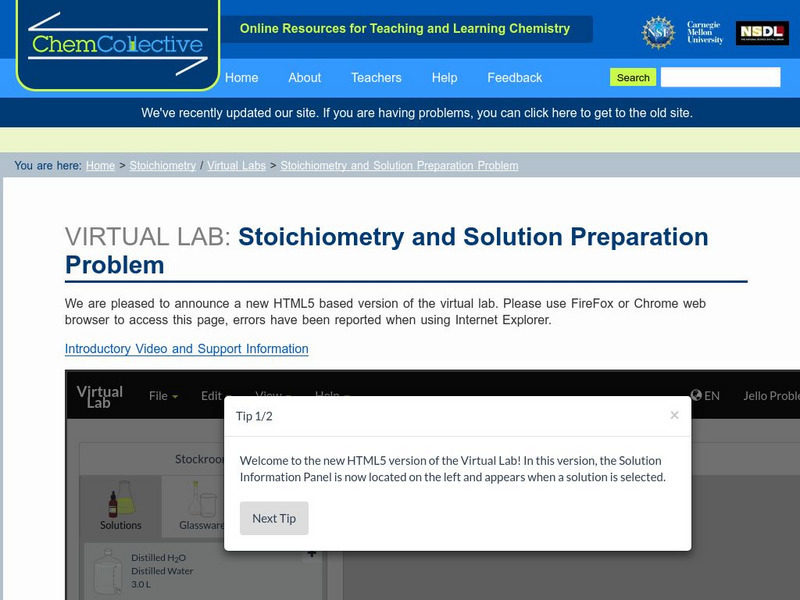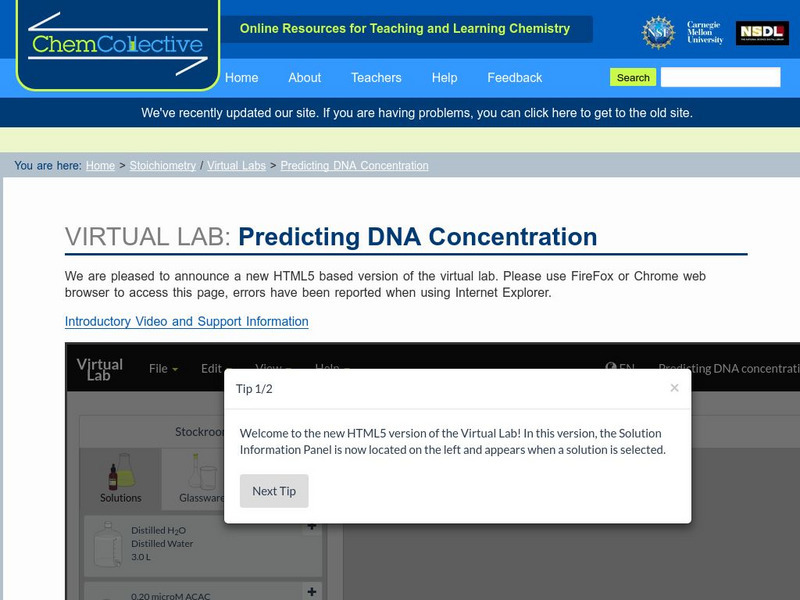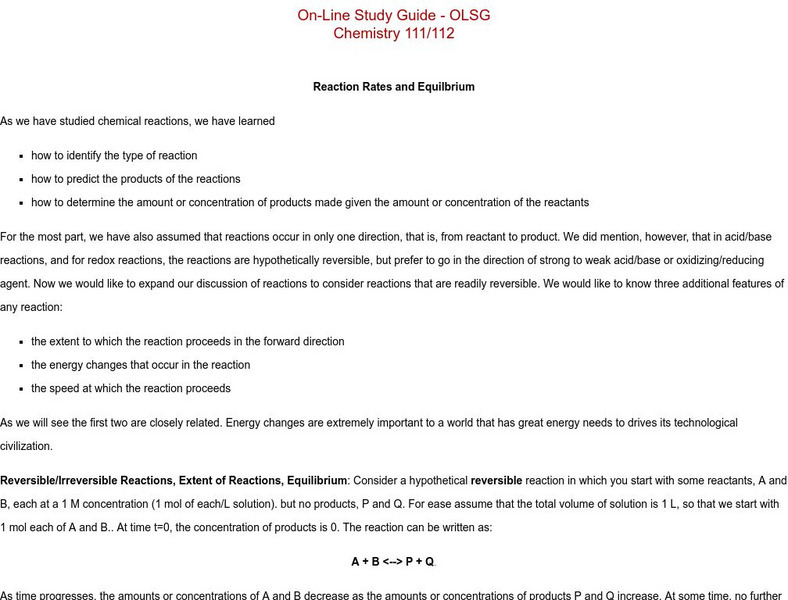CK-12 Foundation
Ck 12: Mole Ratios
[Free Registration/Login may be required to access all resource tools.] In this learning module, students will learn how to calculate and account for the amounts of reactants and products in a given chemical reaction.
BBC
Bbc: Gcse Bitesize: Chemical Calculations
You should be able to calculate the masses of reactants and products from balanced equations, and the formula of a compound from information about reacting masses.
University of Oxford (UK)
University of Oxford: Named Organic Reactions: An Interactive Guide
Discover types of organic reactions. Explore by reactants and products. Use the interactive portion of this module to draw mechanisms associated with these reactions.
University of Colorado
University of Colorado: Ph Et Interactive Simulations: Reactants, Products, Leftovers
Explore the analogy of sandwich making with several ingredients and see if anything is left over. Then do the same thing with reactants in a chemical reaction, to see how many different products can be made. Afterwards, play a game with...
Sophia Learning
Sophia: Limiting Reactant Identifying
Watch this tutorial, and learn how to identify the limiting reactant in a chemical reaction. [7:04]
Sophia Learning
Sophia: Limiting Reactant Definition: Lesson 2
This lesson will define a limiting reactant and its significance as well as the term "in excess". It is 2 of 2 in the series titled "Limiting Reactant Definition."
Sophia Learning
Sophia: Limiting Reactant Definition: Lesson 1
This lesson will define a limiting reactant and its significance as well as the term "in excess". It is 1 of 2 in the series titled "Limiting Reactant Definition."
CK-12 Foundation
Ck 12: Plix Series: Limiting Reactant
[Free Registration/Login Required] Using atoms from a reactants pool, construct products of an equation shown and place them in the product pool. Then answer a challenge question about the topic.
Frostburg State University
General Chemistry Online: Limiting Reactant Problem
Explains the essence of limiting reactant problems using a sample problem: How can an amount of product (KNO3) be predicted from amounts for two reactants (KCl and HNO3)? Shows the work and explains how to solve these types of problems.
American Chemical Society
Middle School Chemistry: Controlling Amount of Products in a Chemical Reaction
Students analyze the chemical equation for the reaction between vinegar and baking soda. They observe that the gas produced in the reaction is also part of the products of the written chemical equation.
Chemistry Collective
Chem Collective: Stoichiometry and Solution Preparation Problem
In this limiting reagents problem, students mix together solutions in different ratios in an attempt to produce a final solution that contains only 1 product.
CK-12 Foundation
Ck 12: Chemical Equations
[Free Registration/Login may be required to access all resource tools.] Students explore mass relations between reactants and products for a given chemical process, and practice balancing chemical equations.
CK-12 Foundation
Ck 12: Connecting Cellular Respiration and Photosynthesis
[Free Registration/Login may be required to access all resource tools.] How do trees help you breathe? This activity covers the connection between cellular respiration and photosynthesis and identifies the products and reactants of each.
Other
Nearpod: Photosynthesis
In this instructional activity on exploring photosynthesis, students will explore photosynthesis by examining the reactants and products of this process.
Concord Consortium
The Concord Consortium: Molecular Workbench: Seeing Chemical Equilibrium
Observe a visual representation of the equilibrium of products and reactants in chemical reactions. Record data while the reactions are taking place and print out a report afterwards.
Concord Consortium
The Concord Consortium: Molecular Workbench: Catalyzed Reactions
Explore the purpose of catalysts in chemical reactions and how they affect the reaction pathways.
Other
Science Alive: Chemical Reactions and How You Know When You've Made Something
In this activity, young scholars carry out a chemical reaction in which two reactants (baking soda and hydrochloric acid) produce three products (sodium chloride, carbon dioxide gas, and water) and determine that the solid product...
CK-12 Foundation
Ck 12: Stoichiometric Calculations
[Free Registration/Login may be required to access all resource tools.] In the following online tutorial students will learn to calculate the amount in moles of a reactant or product from the mass of another reactant or product. They...
Alabama Learning Exchange
Alex: Types of Chemical Reactions and Predicting Products
The guided inquiry activity enables young scholars to identify the five basic types of reactions - synthesis or composition, decomposition, combustion, single replacement and double replacement. Students will also begin to predict the...
Chemistry Collective
Chem Collective: Predicting Dna Concentration
In this limiting reagents problem, students are given specific concentrations of DNA solutions and are asked to predict what products and reactants will remain after a specific volumes are mixed and reaction has occurred.
CK-12 Foundation
Ck 12: Plix: Balancing Chemical Equations
[Free Registration/Login Required] Before you can balance an equation, you need to count the number of each atom present in the reactants and products. Using the example that is shown here, apply the numbers and table to track how many...
Science Struck
Science Struck: Examples of Single Replacement Reactions
Explains what a single replacement, or displacement, reaction is; describes the two types - cation and anion replacement reactions; and gives examples of chemical reaction equations for each.
Other
On Line Study Guide/reaction Rates and Equilbrium
Here's a full and understandable discussion of Reaction Rates and Equilibrium.
CK-12 Foundation
Ck 12: Stoichiometric Calculations
[Free Registration/Login may be required to access all resource tools.] Based on the balanced chemical equation, students will calculate the masses or moles of reactants or products generated in a given reaction. They will also convert...




















